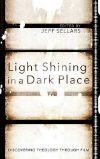- Author(s): Jennifer Mara DeSilva
- When: 2012-10
- Where: Source
In 1965 the film The Agony and The Ecstasy (dir. Carol Reed) presented Renaissance artistic culture, Catholic iconography, and the papal court in Rome to a popular, broad, and non-denominational audience. Based on the novel by Irving Stone (1961), the narrative follows Michelangelo and Pope Julius II through the decoration of the Sistine chapel ceiling (1508-12), outlining a relationship between the two protagonists that suggests some spiritual equality. In the same way that the Second Vatican Council (1962-65) strove for spiritual renewal and an emphasis on the wonder of humankind’s relationship with God, The Agony and The Ecstasy portrays the Sistine chapel ceiling as a non-denominational emblem of hope that had the power to transform even the pope. The transformation of Pope Julius from an institutionally focused authoritarian into a more humble and spiritual man coincided with the North American media’s embrace of Pope John XXIII and Paul VI’s more ecumenical overtones.







